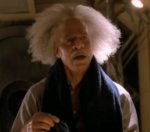Sword of Spirit
Legend
So the collective wisdom of the adepts of literature and drama has, again, proven worthless and irrelevant to my needs. After imposing upon a friend to be the sounding board for my scathing rebuke of the professors of the arts, referencing six-legged spiders and centuries of failing to examine the root concepts of their trade, I realized--hey, why I don't I go ask the people who actually have to deal with these same issues?
So for the fellow RPG designers, I have a question.
I'm attempting to determine a list of the story roles and archetypes of characters that is appropriate to a multiple or group protagonist scenario, such as (surprise!) a party of characters in an RPG.
The reason I'm doing this is that in my system one of the play styles involves creating characters in a very narrative format without any sort of mechanical balance. The characters each fulfill a particular role and archetype, and should be designed to fit that role--even if one of them is Gandalf and the other is Pippin.
What I'm having the hardest time coming up with is the sort of list I need of different types of complimentary protagonists (I realize that Pippin barely counts as a protagonist; that analogy wasn't intended to be taken this far). This isn't just an RPG thing. Many movies have multiple protagonists. And it is an oversimplification to move all of them into traditional supporting/non-protagonist roles.
RPGs provide an excellent example. You often have comic relief characters, but rarely have sidekicks. You have wise characters, but usually lack mentors. There are anti-heroes right beside heroes.
So, what are some examples of "protagonistic" character archetypes in a story without a single protagonist? Heck, even a list of protagonist archetypes would help.
So for the fellow RPG designers, I have a question.
I'm attempting to determine a list of the story roles and archetypes of characters that is appropriate to a multiple or group protagonist scenario, such as (surprise!) a party of characters in an RPG.
The reason I'm doing this is that in my system one of the play styles involves creating characters in a very narrative format without any sort of mechanical balance. The characters each fulfill a particular role and archetype, and should be designed to fit that role--even if one of them is Gandalf and the other is Pippin.
What I'm having the hardest time coming up with is the sort of list I need of different types of complimentary protagonists (I realize that Pippin barely counts as a protagonist; that analogy wasn't intended to be taken this far). This isn't just an RPG thing. Many movies have multiple protagonists. And it is an oversimplification to move all of them into traditional supporting/non-protagonist roles.
RPGs provide an excellent example. You often have comic relief characters, but rarely have sidekicks. You have wise characters, but usually lack mentors. There are anti-heroes right beside heroes.
So, what are some examples of "protagonistic" character archetypes in a story without a single protagonist? Heck, even a list of protagonist archetypes would help.





